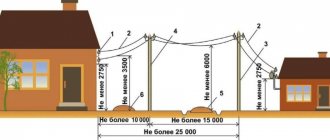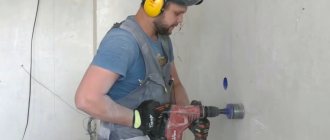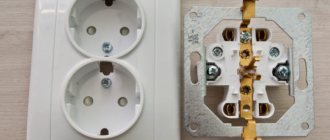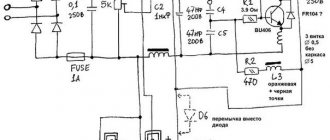Set of socks, Omsa socks
349 ₽ More details
Set of socks, Omsa socks
349 ₽ More details
Light wallpaper
Comfortable life in a country house is impossible without electricity. However, in order to gain access to the general power grid, a number of conditions stipulated by law must be met. First of all, it is necessary to install an electric pole at the summer cottage, which allows you to securely fasten the wires supplying electricity from the power lines to the residential building and outbuildings.
Power lines are created using electric poles to provide homes with electricity.
Electric pole on the site, how to install, rules, requirements
We will analyze the procedure if there is a need to install an electric pole on the site to connect the house (cottage, hereinafter we will call the object) to the power supply.
Firstly, you need to contact the organization that supplies electricity to the given locality.
Before this, you need to find out the list of documents that need to be submitted (depending on the region and conditions, this list may differ).
If the appeal is completed correctly and a positive decision is made, then the owner of the object receives technical conditions. They indicate all the technical work that is required for connection.
In particular, the technical specifications specify all the necessary parameters for installing an intermediate support, if there is a need for one.
This is the exact location, height and other details that are strictly required.
Only after receiving the Technical Specifications can you begin work directly.
As a rule, the power supply organization can recommend a specialized organization that provides such services. But not everyone is satisfied with the prices for such work.
If you decide to install an electric pole yourself, then you should do this in compliance with all applicable rules and regulations.
The choice of material from which the support will be made is limited to three options: wood, reinforced concrete and metal.
Concrete pillar
Reinforced concrete supports are manufactured in industrial conditions, subject to technological parameters.
High-quality poles will last a long time because they cannot be affected by aggressive components emitted into the atmosphere by industrial enterprises.
But a reinforced concrete electric pole has a significant drawback - its weight. It is very heavy, which makes it extremely difficult to install it yourself.
Metal supports
As a rule, they are used in the construction of high-voltage power lines. They consist of steel structures, are quite heavy and expensive.
Wooden electric pole
The name of the pole itself suggests that such electrical supports are made from a tree trunk. Such supports have a number of undeniable advantages over the two described above.
- Firstly, the cost of a wooden pole is much lower than a concrete one or one made of metal structures.
- Secondly, the weight of a wooden pole is much less, and lifting equipment is not required to install it.
- It is quite possible to make a wooden electric pole with your own hands.
- A properly prepared pillar treated with antiseptic and anti-flammable compounds can last no less than a concrete one. Namely, up to 40 years old.
Requirements for a wooden electric pole
To be used as a support, the pole must meet the following requirements:
- Wood - debarked coniferous tree trunks or oak. This treatment of the trunk allows you to preserve a layer of resin, which protects the tree from the influence of precipitation.
- The upper diameter of the trunk must be at least 12 cm for a voltage of 1.0 kilovolts, and 16 cm for 1.0-3.5 kilovolts.
If you intend to do the electrical wiring in a frame house yourself, check out this article!
Electric pole: installation requirements
Before installing an electricity pole, let’s familiarize ourselves with the existing rules and regulations:
- the pole must be positioned so that the uninsulated wires on the support are located at a distance of at least 150 cm from the windows, balcony or loggia; for a self-supporting insulated wire (SIP), these requirements are the same.
- on the branch to the entrance to the facility, the unprotected wire cannot be located below 275 cm from the ground, and the self-supporting insulated wire - 250 cm.
- if the power line is located above the road, then it should be located at least 600 centimeters. Above the impassable part, a location of at least 350 cm is possible.
- The electrical pole on which the electrical wires will be mounted must be non-flammable. It is easier with a concrete and reinforced concrete structure, but one made from a tree trunk is pre-impregnated with a special impregnation that does not allow combustion.
- if unprotected wires are used, they must be located at least 100 cm from any pipeline. There is no such restriction for isolated people.
- Dielectric (glass or ceramic) insulators are mounted on the electric pole.
A diagram of the requirements for compliance with distance standards from wires is shown in the figure.
Wooden electric pole installation technology
- The location of the support is determined in strict accordance with the technical conditions.
- The area is thoroughly cleaned of debris, tree roots, and leveled.
- A hole is drilled or dug for the post.
In this case, the depth should be at least one and a half meters. But if the depth of soil freezing in winter is greater, then the pit is prepared to a greater depth. The hole can be dug by hand or using an electric drill. - A wooden electric pole can be installed not only directly into the ground, but also with a concrete stepson.
If the pole is installed without a concrete stepson, then the lower part that will be in the ground is treated with bitumen or creosote. In the case of installation with a stepson, it is firmly attached to a wooden support before installation begins. - The post is installed in the hole, leveled to the hydraulic level and covered with crushed stone with careful compaction. To better fix the support, it can be filled with concrete.
Methods for installing wiring to an object
- Connection using bare aluminum wire.
- Using copper or aluminum cable.
- Use self-supporting insulated wire (SIP).
This modern material has undoubted advantages over those presented above. It is reliable and safe.
You have become familiar with the rules and technology for installing a wooden electricity pole.
It is still better to entrust the installation of the line itself, the entry into the house or cottage, to a specialist.
How to install an electric pole on a site
You might be interested in reading
Source: https://www.allremont59.ru/inzhenerka/elektrika/kak-ustanovit-elektricheskij-stolb-na-uchastke.html
Distance from power lines to fence: safe standards SNiP and SanPiN from supports
The safe distance from the power line to the fence of a private house is a detailed SNiP parameter, the length of which depends on the voltage level in the power lines.
SanPiN 2971-84 sets out the requirements for remoteness, developed based on the experience of large-scale planned construction in the era of state standardization.
The distance that can be considered safe is determined to ensure that there is no threat to the health of those living on the site due to electromagnetic radiation.
Fire safety, as provided for in the relevant standards, is aimed at preventing fire in the event of possible malfunctions.
Power line near the city
Rules and regulations
The main condition for the trouble-free existence of buildings on a land plot is compliance with all the necessary rules and regulations provided for by existing legislation. SNiP 30-02-97 as amended for 2022 and SP 53.13330.2011 are now being considered at the legislative level.
They are the ones who dictate the distance standards that are taken into account during inspections by supervisory organizations and the examination of claims between owners of plots located in the neighborhood in court.
A safe distance from power lines can be determined even independently, although when obtaining permits, officials approving the construction project must indicate the inadmissibility of being close to power lines. According to existing rules, the minimum safe distance from the supporting electrical wire of a structure is determined as follows:
- 35 kV, on a pole - 3-4 insulators - 10 meters;
- 110 kV – 6–8 insulators – at least 20 meters;
- 220 kV – 15 insulators – from 20 to 25 meters;
- 330 kV – 2 wires in a bundle on one phase of a power line column – required distance – 20–25 m;
- 500 kV – 3 wires on one phase – distance requirements – 30 meters;
- 750 kV – 4 wires in phase – 40 meters;
- 1150 kV – 55 m minimum recommended distance, although you can find recommendations to add another 5–10 m.
Calculating the distance from the fence to the power line support is fundamentally incorrect. According to the rules, such a distance is defined as a perpendicular drawn to the fence post from the extreme line of wires.
The minimum height for a power transmission line is considered to be 7 m, which means that under unfavorable conditions, the charge accumulated by it can be discharged into the atmosphere, causing destruction and irreversible consequences.
Therefore, for greater safety, it is not the distance from the support that is considered. The required meters must be measured from the outermost point of the wire located on the side of the fence.
Any rules, no matter what authority they were developed, categorically prohibit the construction of anything under the territory over which the line directly passes, as well as the planting of trees, the construction of a fence, and any non-residential structures.
Diagram with the dimensions of power transmission line security zones depending on voltage
The need to comply with rules and regulations
In SNiP there is no regulated distance from the pole to the place where the power line support is dug in, however, there is another document, SanPiN 2971-84, which is not by chance called “Sanitary standards and rules for protecting the population from the effects of the electric field created by overhead AC power lines industrial frequency current".
The purpose of this document, adopted at the legislative level in the era of state standardization norms, is to protect the life and health of the population living in the area of close proximity to the networks.
It is no coincidence that he was signed by deputy. Chief State Sanitary Doctor of the USSR.
In the power transmission line security zone, a territory is not simply created that provides the possibility of unimpeded repair and maintenance of the power line.
Sanitary and hygienic standards are calculated based on scientific research data.
How to install an electric pole in a country house with your own hands
Comfortable life in a country house is impossible without electricity. However, in order to gain access to the general power grid, a number of conditions stipulated by law must be met. First of all, it is necessary to install an electric pole at the summer cottage, which allows you to securely fasten the wires supplying electricity from the power lines to the residential building and outbuildings.
Power lines are created using electric poles to provide homes with electricity.
Types of supports
There are many types of wire supports. the following types of electricity poles are most often
- metal;
- wooden;
- reinforced concrete.
The most durable electric poles are made of metal.
Metal supports are comfortable and durable. However, they are much more expensive than poles made from other materials. In order to protect the metal support from corrosion, it is coated with a thin layer of zinc. After installation on the site, such an electric pole is grounded : this allows you to avoid electric shock when operating power lines.
Wooden supports for wires are made of pine. The logs, cleared of branches and bark, are dried, treated with fire-fighting compounds and impregnated with antiseptics to prevent wood rotting.
Electric poles made of wood have two important advantages : they are relatively cheap and easy to install (you can install a pole in your summer cottage with your own hands, without resorting to the use of complex equipment). However, designs of this type also have a number of disadvantages.
Thus, wooden supports are short-lived. In addition, they can only be installed in non-wetland areas with dry soil.
This video shows how to install an electric pole:
Reinforced concrete electric poles remain the most popular in the domestic market - monolithic structures made of concrete reinforced with wire or metal rods. Such supports have an affordable price and a long service life, and are suitable for use in any environment.
The only drawback of reinforced concrete pillars is the difficulty of installation. In order to install such a structure on a summer cottage, special equipment is needed.
Requirements for installation of an electric pole
Current legislation contains a number of requirements regarding the location of power transmission line supports on and near private plots. Thus, the distance from one main line pillar to another should not exceed 50 m. The minimum distance between them is determined in each case individually (taking into account the diameter of the working wire, wind load and cable tension level).
The distance from the wall of the country house to the nearest main support should not be more than 25 m. Otherwise, additional support structures are installed near the site. The distance between the distribution and intermediate poles for electricity at the dacha is determined individually, taking into account the landscape, local infrastructure and the location of the end consumers of electricity.
The distance from any power line support to the fence should not be less than 100 cm. It does not matter on which side of the fence the electric pole is located. Moreover, in cases where the supporting structure is located in an area enclosed by a fence, the owner of the site is obliged to provide employees of service organizations with unhindered access to the pole and wires.
Wires supplying residential buildings and outbuildings with electricity cannot hang lower than 600 cm above the roadway. The distance from the ground to the cable passing over the walkway should not be less than 350 cm. The input wire supplying electricity directly to the house can only be located at a height of 275 cm or more.
Installation procedure
Installation of a power line support is a complex and responsible procedure consisting of several stages. In order to properly install an electricity pole on a site, you must:
- draw up a plan for landscaping the area adjacent to the dacha, and mark on it the place where the supporting structure will be located;
- coordinate the resulting scheme with neighbors in the area and supervisory authorities;
- remove turf and tree roots at the point where the supporting structure is installed;
- drill a well in the soil, the depth of which should be 50 cm greater than the freezing level of the soil (for this you can use either special equipment or an ordinary garden drill);
- pour a 10-liter bucket of crushed stone into the hole;
- install a pole in the well and secure it in the desired position using supports;
- fix the support in the ground by tying it with a metal mesh or reinforcing bars;
- pour concrete solution into the hole and leave it to harden.
: installation of a vulture from a pole to a house.
On days 5-7 after the end of the procedure, it is necessary to remove the supports supporting the pole and make sure that the supporting structure is fixed strictly perpendicular to the surface of the earth. Immediately after this, you can submit an application for installation of power lines to the local energy supply organization.
Source: https://zaborprofi.com/planirovka/ustanovka-jelektricheskogo-stolba.html
Installation procedure
Installation of a power line support is a complex and responsible procedure consisting of several stages. In order to properly install an electricity pole on a site, you must:
On days 5-7 after the end of the procedure, it is necessary to remove the supports supporting the pole and make sure that the supporting structure is fixed strictly perpendicular to the surface of the earth. Immediately after this, you can submit an application for installation of power lines to the local energy supply organization.
Source
ConstructionDialogue
Without electricity, it is currently difficult to establish normal life in a house or country house, therefore, before selling or after purchasing a plot for individual housing construction, electric wires are immediately installed on it. A cable is hooked up to a common power line and brought out to a support on the site. But before you start pulling, you need to install this very pillar.
What types of pillars are there?
Today, 3 types of supports are used:
- Wooden;
- Reinforced concrete;
- Metal.
Which one is rational to choose?
Wood
Wooden poles used to be installed everywhere; today they are used mainly in private construction. Designs can be:
- Solid wood. Before installation, the log is impregnated with antiseptics and fire-fighting compounds. Wooden support can be used on dry soils in non-wetlands.
- A wooden pole with a reinforced concrete base is the best choice for supporting a power line. The concrete beam to which the support is attached is buried in the ground, the tree does not come into contact with the unfavorable environment at all.
The advantages of wooden supports are their low cost. You can install an electric pole in your dacha yourself without the use of special equipment.
Reinforced concrete
Reinforced concrete structures are much more expensive than wooden ones, but they also last for an almost unlimited amount of time.
Concrete pillars without a reinforcement frame inside are cheaper, but due to their fragility, they require the installation of additional supports.
To install a support made of concrete or reinforced concrete, you need to order lifting equipment - the products are quite heavy and it will not be possible to manually give them a vertical position.
Metal poles
The electric pole on the site can be made of metal alloys coated with a layer of zinc, which protects the metal from corrosion. There is no need to worry about current transmission - the supports do not conduct electricity, they are grounded and the risk of receiving an electric shock is zero.
The choice of pillar should be made based on the needs and financial capabilities of the owner of the site.
Requirements for power lines up to 1 kV
Cables with a maximum voltage of no more than 1 kV are installed in a private house or country house. When designing and constructing a line with a voltage of less than 1 kV, it is necessary to observe the standard distances from supports to utility facilities.
- The distance between the line poles should not exceed 50 meters; the minimum distance between the main supports is determined based on the calculation of the wind load, the degree of tension of the cable line and the cross-section of the working wire. At the same time, the distance from the main support to the wall of the house should not be more than 25 meters. If the span is large, installation of additional supports is required.
- The distance from an electric pole to a distribution pole is not strictly standardized; it is determined by the terrain plan and the location of consumer points and other supports. It is important that the sag of the wire to the roadway is less than 6 meters, which will ensure the safety of the entire line when passing heavy trucks and special equipment. The cable sag above the walkway should not be less than 3.5 meters.
- A common question that developers face is what should be the distance from the electric pole to the fence. According to the regulations, the distance between the support and the fence of the site must be at least 1 meter. This value is sufficient for convenient installation of the structure and access for network maintenance by specialists. Moreover, it does not matter which side of the fence the pole is installed on - from the street or on the site, power engineers must always be able to independently reach the pole and cable; the support on private property does not belong to the owner of the land and he has no right to move it without the knowledge of the supervisory authorities.
- According to the standard, the distance from the house to the electric pole for a line less than 1 kV should not be less than 2 meters. You should also observe the height of the cable entry into the house for the power line - not lower than 2.75 meters.
How to Install a Power Line Pole
To install poles for electrical wires yourself, you must follow the action plan:
- Drawing up a plan in accordance with the standards. On it it is necessary to indicate the distances between supports, landscaping elements, and calculate the amount of sag. This plan must be agreed upon with the supervisory authorities and neighbors of the site.
- Site preparation and drilling of wells. At the point where the pillar is located, turf and tree roots are removed. For drilling, you can invite special equipment or use a garden drill (depending on the type of soil and the diameter of the support). The drilling depth should be 0.3-0.5 meters below the soil freezing level in the region.
- Crushed stone is poured into the bottom in layers with sand to a height of 20-30 cm. This cushion will prevent the structure from being pushed out when the soil expands.
- A post is installed in the pit manually (wooden) or using lifting equipment (reinforced concrete, concrete). It is important to level the vertical position before fixing the support in the ground.
- To prevent the support from collapsing, it is tied with reinforcing bars or a finished mesh, fixing it to the ground.
- Pour the concrete solution into the hole and leave to harden. You can remove the supports as early as 5-7 days.
The installation of metal supports for power lines and wooden poles with a concrete base is carried out in a similar way.
After completing the work, you can begin installing the electrical line.
Source: https://StroikaDialog.ru/articles/communikacii/ustanovka-jelektricheskix-stolbov-na-dache
What should the actual pillar be like?
For low-voltage lines, reinforced concrete, metal, solid wood and wooden poles with a concrete base can be used. All types of wood, except larch, must be impregnated with an antiseptic; Larch wood itself is extremely resistant to rotting.
Wood is the most affordable material for a pole.
When using a wooden support, its minimum diameter (at the top end) should be:
Regarding the deepening of supports, the document is somewhat vague - “depending on local conditions.”
What should be the minimum distance from the pole to surrounding objects and communications?
| An object | Distance, meters |
| Water pipelines, heating mains, sewerage | 1 |
| Fire hydrants, water pumps, water wells | 2 |
| Power cables (for example, a wire from a well pump) without additional protection (insulating pipe) | 1 |
| Power cables in conduit | 0,5 |
How to install an electricity pole on a site
Without electricity, it is currently difficult to establish normal life in a house or country house, therefore, before selling or after purchasing a plot for individual housing construction, electric wires are immediately installed on it. A cable is hooked up to a common power line and brought out to a support on the site. But before you start pulling, you need to install this very pillar.
Electric pole in the garden
I bought a plot of 6 acres, in the middle there is an electric pole, from which wires go to the neighbors. Is this legal? Can I demand that the horticulture board connect electricity from the poles on the road, since this is done for all the neighbors?
Lawyers' answers (1)
How to install an electricity pole in your dacha with your own hands?
Where can I install an electricity pole in my dacha? What distances should you keep from surrounding objects? What should the wires and insulators be like?
What does the price depend on?
First of all, from the materials used. Wood is highly not recommended for use. Cement, abrasive fillers and reinforcing materials – 70% of the retail cost. The remaining 30% are design features. The most expensive model - which can hold up to 9 high-voltage wires and 4 broadcast wires. The design parameter is also clearly stated in the permitting documentation from the regional power grid organization. For services, the latter may require from 700 to 2000 rubles .
Also, the final cost will be formed according to the following expense items:
- The power line support itself costs from 6,000 rubles .
- Delivery to the site by special transport and use of a hole drill - from 8,000 rubles . (depending on the remoteness of the final location of the site)
- Lifting and installation - from RUB 3,500 .
- Soil compaction - from 800 rubles .
- Electrician work on stretching and connecting cables - from 1,500 rubles .
- Purchase of cables – from RUB 3,000 . (changes based on the required footage).
In rare cases, project documentation may be free, with the exception of a fee of 300 rubles . To do this, several receipts are issued, with which you need to contact the cash desk of any bank.
How to install an electric pole on a site with your own hands
You are here: If there is a need to connect an object to power supply, the owner of this object must contact the local power supply organization, having previously found out what documents are needed to complete the application.
If the issue is resolved positively, the owner is given technical specifications, which list all the technical measures that are necessary for connection.
If it is necessary to install an electric pole (intermediate support), the location where the installation should be made, the height that the support should have and other details must be specified in the technical specifications. The basic requirements for overhead power lines are described in Chapter 2.4 of the PUE, paragraphs 2.4.55-2.4.70.
So, the approval stage has been completed, Technical Conditions have been received, which require the installation of additional support. This work can be entrusted to a specialized organization if you are satisfied with the cost of such services. For those who decide to build a support themselves, let's look at how to install an electric pole on a site, in accordance with current norms and regulations.
Which pole to choose
When choosing the material from which an electric pole is made, practical consideration comes down to three options. This is a support made of wood, metal or concrete.
Concrete supports are most durable if they are manufactured in compliance with the technology in the factory. They are not afraid of aggressive components contained in the atmosphere of large cities.
Their biggest drawback is their heavy weight, which makes it very difficult to install the support.
Metal supports are assembled from steel elements. They are used in the construction of high-voltage power lines, when the required overall dimensions do not allow the use of concrete. Note that the most accessible and cheapest power line support is made of wood, which is easy to verify by finding out how much such a product made of metal or concrete costs.
A short list of reasons in favor of this material is as follows:
- An electric pole made of wood is much cheaper than a pole made of metal or concrete. The wooden support can be made by hand.
- Wood support is the lightest. Its installation can be done quite easily without the use of lifting equipment; it fits organically into the decor of the dacha.
- A wooden electric pole, pre-treated with an antiseptic, has a service life that is often not inferior to a concrete pole. A support made of low-quality concrete is subject to rapid destruction under the influence of precipitation and temperature changes.
Stages of work execution
Installing an additional electrical support requires following a certain sequence of actions, which we will consider below. First of all, let's talk about what requirements apply to the installation of an electric pole on the site. So, the installation must be carried out in accordance with current norms and regulations, namely:
- the distance from an unprotected wire on a support to balconies and windows should be at least 1.5 meters, and from self-supporting insulated wires - at least 1.5 meters;
- on the branch to the inputs into the house, the non-insulated cable must be no lower than 2.75 meters from the ground, and the self-supporting insulated cable - 2.5;
- above the roadway the power line must be located at least 6 meters, above the impassable part - at least 3.5 meters;
- the structures on which the current conductors are installed must be made of fireproof materials (the wooden pole must be impregnated with a protective composition that does not support combustion);
- the distance from uninsulated conductors to a pipeline for any purpose must be at least 1 meter, and if the wire is insulated, the distance is not standardized;
- insulators on supports should be made of porcelain or glass.
As for the technology for installing an intermediate support on the site, it looks like this:
- In accordance with the issued technical specifications, the location where the electric pole should be installed is selected.
- Depending on the nature of the soil, a hole is drilled or manually dug into which the support will be installed. If the support is no longer than 10 meters, the sufficient depth of the pit is 120 - 150 cm.
- In the case when a wooden electric pole is installed directly into the ground, the underground part of the support is pre-treated with bitumen mastic. When using a concrete stepson, the latter must be attached to the support before installation.
- Next, the support is installed in the prepared pit. The position is controlled using a level and fixed by filling the hole with crushed stone and compacting it.
- You can finally fix the electric pole by filling the free space of the pit with concrete, or limit yourself to filling it with crushed stone.
We offer you another option for installing an intermediate wooden support in your dacha. All you need is to make a pole, at one of the ends of which a cross is assembled, measuring 2*2 meters. The connection of the cross with the end is carried out in half a tree using galvanized corners.
Next you need to make four jibs, as shown in the photo below. After this, the homemade wooden support is painted with bitumen mastic to a height of about one and a half meters.
The last stage of installation is to dig out a cross-shaped hole, install the post, level it plumb or level, and backfill/compact the soil.
Regulatory Requirements
Let's start with regulatory requirements. They are prescribed in the PUE - rules for the construction of electrical installations. We have to study the latest, seventh edition of the document, adopted by the Ministry of Energy of the Russian Federation in 2003.
Please note: the adopted document canceled the validity of the older PUE. The changes affect, among other things, the chapter “Electricity sewerage” that is relevant to us.
Let's pay attention to the most important points of the document in our case.
General requirements for lines with voltage up to 1 kV
Comment: it would seem that this point puts an end to wooden pillars. But... no, a loophole remains: wood impregnated with a protective composition does not support combustion.
Requirements for overhead lines with voltage up to 1 kV
The supports should not impede passage and passage, or block entrances to courtyards.
Where there is a possibility of being run over by a car, the support is protected from collision with it by a bumper or any other method.
The pole must be marked at a height of 2.5 - 3 meters. It indicates the serial number of the support, the width of the security zone and the telephone number of the line owner.
All metal structures are protected from corrosion. The method of protecting the PUE is not specified; Traditionally, painting is used for this.
The minimum wire cross-section for an overhead line is limited by its mechanical strength and is determined by the material.
| Wire type | Minimum cross-section, mm2 |
| Aluminum | 16 |
| Steel-aluminum | 10 |
| Bimetallic | 10 |
| Steel stranded | 25 |
It’s curious: for a single-wire steel wire, it’s not the cross-sectional area that is limited, but the diameter. It should not be less than 4 mm.
The branch from the nearest support is carried out only and exclusively with an insulated wire. The maximum branch length is 25 meters.
To connect the wires, connecting clamps or welding are used. Single-wire wires can be connected by twisting followed by soldering; but you can’t butt weld them. In this case, a wire that differs in material or cross-section of the current-carrying core is connected only with clamps.
The minimum cross-section of the entrance to the house is also limited by the document; and in this case the cross-section is determined by the type of wire:
| The wire | Minimum section or diameter | |
| Span up to 10 meters | Span 10-25 meters | |
| Copper self-supporting | 4 mm2 | 6 mm2 |
| Steel or bimetallic | 3 mm | 4 mm |
| Aluminum | 16 mm2 | 16 mm2 |











